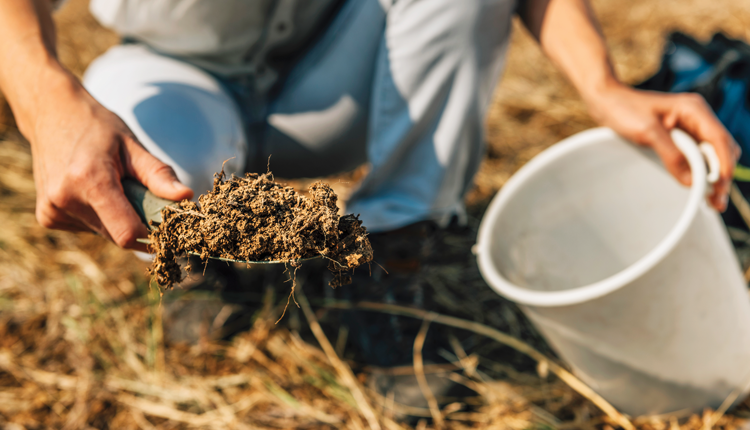
Fall is the busiest time of year on farms. The “boys of fall” find a heavy load to carry between the planning, persistent day-to-day chores, harvest tasks, application, and tillage added to the regular to-do list. Piling onto the stress of the fall rush, farm decisions made in autumn will have lasting consequences for the year to come.
While data collection may not seem as vital as seeding winter rye, the key to any nutrient management plan is high-quality data and excellent documentation. And despite our best wishes, if the majority of nutrient management plan data are not obtained during the fall rush, the opportunity to compile this information vanishes quickly.
Update soil tests
Soil testing should be at the top of everyone’s mind when it comes to fall nutrient management tasks, and I’m not just saying that because I work for a soil analysis laboratory. The soil test and its results are the basis for all planning — whether regulatory or agronomic in nature. In most situations, quality soil samples can be obtained in spring or fall. But when it comes to planning, the majority occurs in the winter months and demands current soil samples for task completion.
The soil is always present in the field, but the ability to pull high-quality, representative samples is not. This is one of the greatest reasons for developing a soil sampling strategy before harvest. First and foremost, samples should be pulled prior to tillage. Tillage disturbs the soil and makes it difficult, if not impossible, to pull accurate soil samples. The greatest problem with tilled soils is pulling samples at the correct depth due to surface roughness. The fluffy soil also doesn’t sample as consistently as virgin soil, leading to bad soil probe cores and, consequently, inaccurate results.
Samples should also be pulled prior to manure application. The thought process behind this is quite simple: Manure is full of valuable nutrients, and these nutrients will become part of the soil sample if collected after manure application. This leads to an overestimate of the available nutrients in the soil. An artificially high soil test phosphorus value is also likely to lead to increased regulation. While regulations are valuable for fields testing high in phosphorus, the increased regulation would not be warranted because of the artificially high soil test value created by manure application.
Don’t dismiss solid manure
Liquid manure is generally the greatest fall manure application task and, therefore, demands the most attention. Solid manure details are often forgotten when winter rolls around but are just as valuable as liquid when it comes to supplying crop nutrients and need tracking just the same.
One of the greatest difficulties in solid manure application is tracking the rate. There are no flow meters or rate controllers when it comes to applying solid manure. It is still old-fashioned speed and flow rate. Giving your nutrient management planner an accurate manure application rate is often an educated guess when the plan is developed in winter.
With proper fall data collection, this estimation can be replaced with accurate details. Calibrating spreaders or, at the very least, citing the number of loads each field receives is vital information to capture at the time of application. Information on calculating the applied rate can be obtained with a quick internet search. It all comes down to knowing the weight of the load and the area covered.
Based on a quick survey of fellow planners, collecting a manure sample from solid manure is the most forgotten item in all nutrient management plans. While it may never be known why solid manure samples are often omitted, it is likely because of the relatively small volume and the difficulty in obtaining an accurate sample. A representative sample requires more effort than just walking up to a pile of manure and grabbing some fecal matter.
The best samples are pulled from the field after the manure has been applied, using the tarp method. Once again, previous articles or a quick web search will yield the finer details of that method. At its core, it involves applying manure on a tarp to get an even mix of what is applied to the field. This will help eliminate the sorting and sample biases created by grab sample methods.
When the depths of fall fury are in full force, the details of solid manure application are often forgotten. When was the manure applied? Was it incorporated? How soon after application was it incorporated? These questions are vital for proper documentation.
Detailed records not only help accurately estimate the risk of nutrient loss but also help determine nutrient credits. All of these small details play a big role in estimating nutrient credits, especially when fertilizer costs are high — why not account for all applied nutrients?
Land additions and subtractions
In today’s farming climate, land is changing hands at a rapid pace. With the rush to apply manure or perform tillage on recently acquired land, it’s easy to forget that it is necessary to add the new fields to a nutrient management plan. First, be sure to let your planner know that a new farm was obtained. The planner will set priorities in motion to get the land added to the plan and soil sampling started. Manure and fertilizer rates cannot be determined without this scientific baseline.
The other important task on the planner’s plate with any new land addition is developing restriction maps. Restriction maps are not just a guideline, but a rule, when it comes to applying nutrients.
Unfortunately, losing land is also part of the modern farming environment. Inform your planner that land will be removed from the system. The planner can then determine if manure rates must be reevaluated due to the changing land base. The lost land will be noted in the annual nutrient management plan update, but generally, there are no additional requirements.
The fall season is never easy. Details are often forgotten when the “big” tasks are on your mind. Keep these items, and your nutrient management planner, in mind when the rush is on. The farm team will thank you in February!
This article appeared in the November 2025 issue of Journal of Nutrient Management on page 12.
Not a subscriber? Click to get the print magazine.










